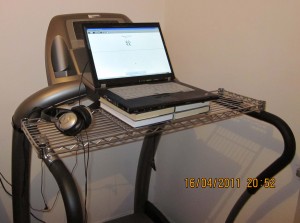The first evidence linking exercise and health was a study of London bus workers in the 1950s. The drivers, who sat all day, had more heart attacks than the ticket takers on the same buses, who were on their feet all day. It was a huge advance — evidence, as opposed to speculation. The results were taken countless times to imply that exercise reduces heart attacks but epidemiologists understood there were dozens of differences between the two jobs. For example, driving is more stressful than ticket taking. Maybe stress causes heart attacks.
The first time I learned about this study, I focussed on two differences. The ticket takers were more exposed to morning sunlight (on the top deck of double-decker buses) and they were on their feet much more. Maybe both of those things — morning sunlight exposure and standing a lot — improve sleep. Maybe better sleep reduces heart attacks. The London data were not consistent with the claims of aerobic exercise advocates because the ticket takers did nothing resembling aerobic exercise.
Later I discovered that walking an hour/day normalized my fasting blood sugar levels — another effect of “exercise” (but not aerobic exercise). I had data from only one person (myself), but it was experimental data. The treatment difference between the two sets of data being compared (no walking versus walking) was much sharper, in contrast to most epidemiology. I am sure the correlation reflects cause and effect: Walking roughly an hour/day normalized my blood sugar. This wasn’t obvious. The first thing I tried to lower my fasting blood sugar levels was a low-carb diet, which didn’t work. I discovered the effect of long walks by accident.
A recent meta-analysis combined several surveys that measured the correlation of how much you sit with other health measures. The clearest correlation was with diabetes: People who sit more are more likely to get diabetes. Comparing the two extremes (most sitting with most standing), there was a doubling of risk. Because people who stand more walk more, this supports my self-experimental findings.
I found pure standing (no walking), or leisurely (on-off) walking, did not lower fasting blood sugar (which I measured in the morning). After I noticed that walking an hour lowered blood sugar, I tried slacking off: wandering through a store or a mall for an hour. This did not lower fasting blood sugar. I concluded it had to be close-to-nonstop walking. Someday epidemiologists will measure activity more precisely — with Fitbits, for example. I predict the potent part of standing will turn out to be continuous walking. Long before that, you can see for yourself.
